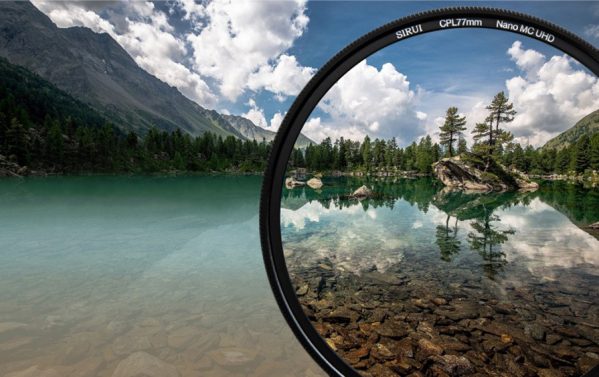SANDMARC Launches New Polarized ND Filter
Only in the last few days, Moment released a set of ND and polarising filters. Meanwhile, SANDMARC are not going to be left behind it seems, having just released their own set.
As you probably know, ND (Neutral Density) filters reduce the amount of light hitting your camera sensor. This allows you better control over you exposure in situations where the light is too bright. Namely, in sunlight.
Meanwhile, polarising filters act to remove glare and reflections. They reduce the amount of light, but only certain bits of it. A polarising filter can be adjusted to reduce the light coming from certain angles, such as glare reflecting from water.
With the new Sandmarc filter, both these have been combined into a hybrid. Essentially, it functions as both.
Find the filter on Sandmarc’s Official page (no affiliation).
Features & Specs:
- Multi-coated, anti-reflective cinema glass
- Clip-on system
- Glass – Multi-coated
- Frame – Aluminum
- Weight- 18 g (0.63 oz)
- Inner Diameter – 40.6 mm
- Outer Diameter – 55 mm
iPhone only?
Now, Sandmarc lenses and filters are marketed as designed for iPhone. So if you’re an android user, you might feel disappointed. However, as they use a clip mount system, I see no reason why Sandmarc lenses and filters can’t be used on any phone.
In fact, a closer look at their website reveals they’ve listed iPhone and android phones as compatible. My guess is that putting iPhone in the marketing title is better for their SEO and in fact their lenses can work for most phones.
Cinematic Frame Rate Settings
The main purpose for a ND filter for smartphone filmmakers is to reduce your shutter speed down to the magic 1/48 or 1/50 setting. If you set your shutter speed higher than this, your video can start to look harsh on the eye.
Sometimes, you actually want this effect as it can add an excitement factor to action footage. But if you want to capture more of that traditional film motion blur, then you’ll need to lower your shutter speed. It’s simple logic when you think about it: the longer the shutter is open, the more movement will be blurred across the frame.
Remove those reflections
Sometimes you’re filming water and you might want that shimmering reflection. Especially if it creates some attractive lens flare, flickering across the image. Other times, you might want to remove it for a clearer image.
I “borrowed” the above image from Sirui, but there seems to be something strange about it. My guess is they have exaggerated things by clouding the water on the left and adding extra sharpness and contrast within the filter. But I could be wrong.
Anyway, it serves as a good illustration of what a polarising filter does.
One problem with the Sirui ND filter is that you need to mount it over their 18mm lens. While the Moment and Sandmarc ND filters can be mounted directly over your smartphone’s inbuilt lenses.
So although it’s far more affordable, it might not be as useful.
Find Sirui ND filter on Amazon.
How much does it cost?
SANDMARC’s polarising ND filter can be purchased from their website for $129.99. There are 3 filters in the pack: ND16, ND32, and ND64 The filters are also compatible with their other lenses, which include wide, anamorphic and telephoto.
Polarising and ND filters are certainly very useful, especially for outdoor filmmaking and photography. Whether you need to spend $129.99 on one, is something to think about.
Oh, I just skipped over to their site to check on shipping costs for buyers outside the USA. Looks like there’s $27.30 USD taxes to be added to that $129.99 (for US buyers too). So the price is actually $157.29.
The cost of international shipping is Standard – $8.50 (2-3 Weeks) or Express – $40 (3-5 Business Days).
One thing we can say about SANDMARC is they produce high quality, professional level lenses and filters. So the extra cost might be worth it.
Why the sudden interest in ND and polarising filters?
Recently, iPhones and other mid-to-top range smartphone models have been shipping with multiple lenses, including telephoto and extreme wide. So, I started to wonder if this was going to have a big impact on companies like Moment and SANDMARC. Well, I’m going to put 2 + 2 together and say they’re trying to mitigate the loss of sales due to the fact that many phones don’t need extra wide or telephoto lenses.
Phones don’t come with ND and polarising filters (and probably never will), so this is safer ground for companies like Moment. However, they probably don’t have nearly as big a market as lenses.
Of course, there’s always the anamorphic which will also probably never be replicated with an inbuilt lens. But that again has a limited market as you’d mostly use one for video.
Click here for Our Official Smartphone Filmmaking KIT LIST
Eager to learn more?
Join our weekly newsletter featuring inspiring stories, no-budget filmmaking tips and comprehensive equipment reviews to help you turn your film projects into reality!
As an Amazon Associate I earn from qualifying purchases.
Simon Horrocks
Simon Horrocks is a screenwriter & filmmaker. His debut feature THIRD CONTACT was shot on a consumer camcorder and premiered at the BFI IMAX in 2013. His shot-on-smartphones sci-fi series SILENT EYE featured on Amazon Prime. He now runs a popular Patreon page which offers online courses for beginners, customised tips and more: www.patreon.com/SilentEye


